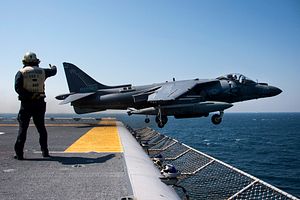In a new article for the Foreign Policy Research Institute, James Holmes and Toshi Yoshihara propose some handy rules of thumb for assessing the path from a fleet architecture plan to an effective maritime force. Holmes and Yoshihara suggest 15 and 30 years cycles for understanding naval power. With committed governments behind them, navies can develop into regionally effective forces in 15 years. In 30, they can challenge for regional supremacy.
Much of this account makes sense for understanding the time lags associated with shipbuilding, and the development of tactical and operational expertise at naval warfare. At first estimation, these lags do seem to apply across a range of historical fleet construction scenarios. Moreover, they suggest that the growing strength of the PLAN may challenge the U.S. Navy sooner, rather than later.
But military power also depends on a constant cycle of technological modernization, for both new and existing platforms. This cycle may not match completely with procurement and training schedules, leaving a force with a host of obsolete platforms or personnel poorly trained to carry out their missions. For example, in the late 1920s and early 1930s the Red Army, in part because of an acute sense of vulnerability, engaged in a wide-ranging modernization project. Especially in aircraft and tanks, heavy state investment helped create a defense industrial base capable of competing with any world contemporary. The Soviet system made judicious but effective use of injections of foreign technology, having acquired numerous examples of tanks and aircraft from Western countries. Western legal systems had not yet developed a strong set of export controls, meaning that the Soviets could purchase parts, hire experts, and buy licenses for production of certain critical components.
By the middle part of the decade, the Soviets were producing some of the world’s most effective weapons. But the Soviets modernized the Red Army too soon; by the time war came, the tanks and planes that had filled unit quotas were obsolete, and replacement equipment came too slowly to fill the need in June 1941. Conversely, Japan succeeded in the early months of the Pacific War by matching its strategic ambitions to its technological peak; Japanese ships and aircraft would never have so substantial an advantage over British and American equipment as they did in December 1941. Indeed, one lesson is that states need to pay close attention to the peaks of their modernization cycles, and decide to risk conflict on that basis.
As technology matures, cycles of obsolescence become longer. In World War I, planes became obsolescent in months; in World War II the process took a couple of years; today a front-line fighter aircraft can last decades. And so the fleet that China is constructing may continue to serve capably for much of the 21st century. But depending on how seriously we take the sensor-communications revolution, China may be building a fleet that will match up poorly with the technological demands of mid-21st century warfare.

































